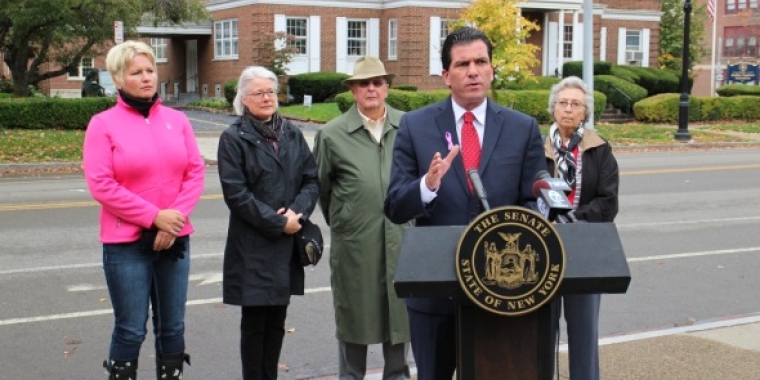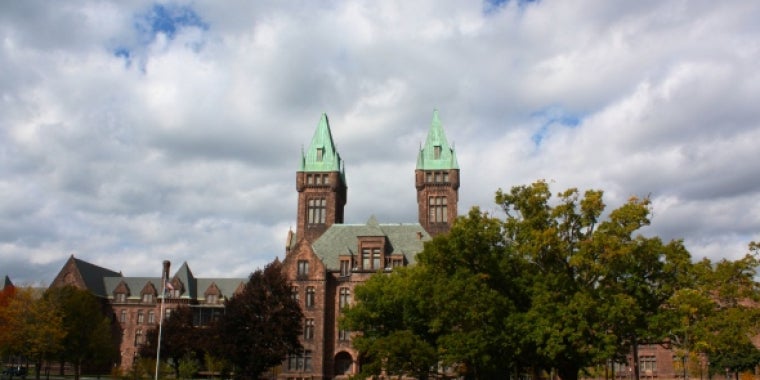The New York State Department of Environmental Conservation (DEC) today added Orange County to its eastern state quarantine area (Ulster and Greene Counties) to prevent the spread of the invasive Emerald Ash Borer (EAB), a tree-killing beetle. The Emergency Quarantine Order encompasses all of Orange County and restricts the movement of ash trees, ash products, and firewood from all wood species in order to limit the potential introduction of EAB to other areas of the state.
Firewood from any tree species.What People Can Do:New Yorkers are urged to take the following steps to keep EAB from spreading to other areas of the state:
Adhere to firewood regulations. New York state restricts intrastate movement of untreated firewood to no more than a 50-mile radius from its source.What is Being Done in NYS to address EABNew York has actively surveyed for EAB since 2003, inspecting declining ash trees and setting detection tools statewide in cooperation with Animal Plant Health and Inspection Service (APHIS), US Forest Service, Cornell University, Cornell Cooperative Extension and SUNYThe Emerald Ash BorerThe EAB has metallic green wing covers and a coppery red or purple abdomen; it is small enough to fit easily on a penny. (Photos are available on DEC’s website www.dec.ny.gov/animals/7253.html.)
ESF. After more than three years of outreach and education efforts about the risks of moving firewood and the state’s regulation, DEC is increasing its enforcement efforts to prevent the movement of untreated firewood into and around New York.
In 2008, New York adopted regulations that ban untreated firewood from entering the state and restricts intrastate movement of untreated firewood to no more than a 50-mile radius from its source. This was done as a precaution against the introduction and spread of EAB and other invasive species because of the documented risk of transmission by moving firewood.
More recently, DEC adopted a strategy known as Slow Ash Mortality (SLAM). SLAM encompasses a variety of approaches to address EAB infestations, including removing infested trees, more precisely defining infestation boundaries, and researching insecticides and biocontrols (organisms that kill pests). The hope is that current research will lead to new ways to suppress EAB populations, minimize their spread and delay the death of ash trees. It is also hoped that SLAM will buy time for communities and forest owners to prepare for EAB’s threat and potential financial impacts. More information about the SLAM strategy is available online at www.dec.ny.gov/docs/lands_forests_pdf/eabresponseplan.pdf .
Damage is caused by the larvae, which feed in tunnels just below the ash tree’s bark. These tunnels disrupt water and nutrient transport, causing branches, and eventually the entire tree, to die. Adult beetles leave distinctive D-shaped exit holes in the outer bark of the branches and the trunk. Other signs of infestation include tree canopy dieback, yellowing, extensive sprouting from the roots and trunk. Infested trees may also exhibit woodpecker damage from larvae extraction.
Since its discovery in southeastern Michigan in 2002, the EAB is responsible for the death and decline of tens of millions of ash trees in the United States. The beetle has been detected in 15 states and two neighboring Canadian provinces. This insect primarily spreads when firewood and wood products are moved from one place to another. Many of New York State’s forests and parklands are high-risk areas due to firewood movement. New York has more than 900 million ash trees, representing about seven percent of all trees in the state; all are at risk should EAB become established across the state.
For more information on EAB, please visit DEC’s website at http://www.dec.ny.gov/animals/7253.html
Wood chips and bark mulch from any tree species, larger than 1 inch in two dimensions, whether composted or uncomposted.
New York’s Order prohibits the movement of regulated articles within and beyond Orange County without certification or compliance agreements issued by NYSDAM or APHIS. It also restricts the movement of the regulated wood products into or through the quarantine district by requiring several provisions including, but not limited to documentation listing the origin and destination of shipments, and prohibiting transporters from unnecessarily stopping while traveling through the quarantine district. The full Order will be posted on the DEC website.
Yvonne DeMarino, APHIS’s State Plant Health Director in New York, said, “Cooperation and collaboration is the cornerstone of the EAB Program. We all need to work together to support detection and control, and prevent the human-assisted spread of EAB.”
The amended Order also prohibits the movement of ash logs into the eastern Quarantine District (QD) from Pennsylvania. The reason for prohibiting such contiguous movement in the eastern QD, which is now allowed in the DEC’s 16-county western EAB quarantine area, under permits from NYSDAM and APHIS, is that the EAB detection in these isolated eastern counties is a separate, “satellite” infestation that did not originate from and is not connected with the western QD. Prohibiting contiguous movement from Pennsylvania into the eastern QD will help prevent the movement of infested material into New York and prevent the spread of EAB across the Hudson river to east-of-Hudson New York, Connecticut, Massachusetts and Vermont. The contiguous movement prohibition will also help isolate this infestation while the state works to contain and slow the spread of EAB.
EAB was first detected in New York state in the town of Randolph, Cattaraugus County in June of 2009. Since then, infestations have been confirmed in eight other counties including Genesee, Monroe, Livingston, Steuben, Greene, Ulster, Erie and Orange just last month.
Become familiar with the types of trees on your property; learn how to recognize an ash tree.
Watch for signs of infestation in your ash trees. If damage is consistent with the known symptoms of EAB infestation, report suspected damage to the state by calling 1-866-640-0652. Symptoms are described below and available online at www.dec.ny.gov/animals/45428.html.
Discuss concerns about ash trees on private property with a certified arborist, and make plans to either combat ash tree mortality with a treatment program or to remove ash trees and replace with other tree species. A listing of certified arborists can be obtained on the International Society of Arboriculture website at www.isa-arbor.com/publicOutreach/findATreeCareService/index.aspx.
Leave all firewood at home. Do not bring it to campgrounds or parks. Movement of firewood is one of the primary pathways for spreading this insect. Instead, obtain your firewood at the campground or from a local vendor – ask for a receipt or label that has the firewood’s local source.
The amended Order, which includes updated rules and regulations, will go into effect 10 days after filing with the clerks of the affected counties and would remain in effect until modified by further Order or permanent rulemaking. With Orange County added, a total of nineteen counties in New York will be quarantined.
“Federal protocols dictate that Orange County be quarantined following the confirmed discovery of EAB, in order to protect the surrounding area from the further spread of this dangerous pest,” DEC Commissioner Joe Martens said. “Together with our state, local, and federal partners, DEC will continue to work proactively in an effort to slow the spread of EAB around our State and slow ash mortality in our communities and forests. We are committed to combating the threats invasive species like EAB pose to the health of our natural resources and ecosystems, and ultimately, our economy. Additional surveying, monitoring, establishment of “trap trees”, removal of infested ash trees, quarantines, firewood regulations, public education and other regulatory actions will continue to be needed if we are to limit the damage from EAB to our state’s 900 million ash trees.”
On July 13, 2011, an adult EAB was discovered in an EAB purple prism trap that was hung in an ash tree at the West Point campus. Identification as EAB was confirmed by USDA APHIS. The purple prism trap is a tool used to detect new EAB infestations. An initial site investigation by DEC regional staff, Cornell University and West Point Natural Resources staff did not find any infested ash trees or the possible source of the EAB introduction.
The state’s quarantine Order requires restrictions on the intrastate movement of certain “regulated articles” – for instance, ash trees, certain wood products, and the Emerald Ash Borer. The Order specifically defines regulated articles as:
Entire ash trees of any size, inclusive of nursery stock.
Any part of ash trees, including leaves, bark, stumps, limbs, branches, and roots.
Ash lumber or ash logs of any length.
Any item made from or containing ash wood.
Any article, product or means of conveyance determined by USDA Animal and Plant Health Inspection Service (APHIS), New York State Department of Agriculture and Markets (NYSDAM) or the Department to present a risk of spreading the EAB infestation.


